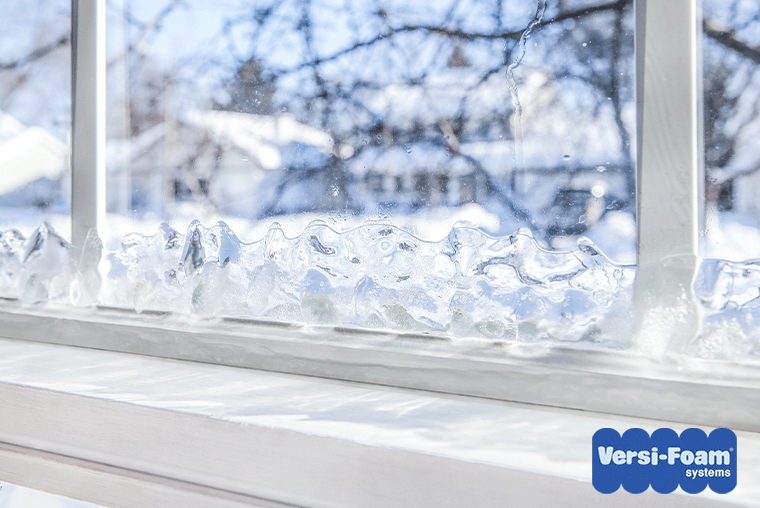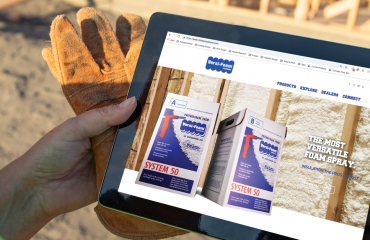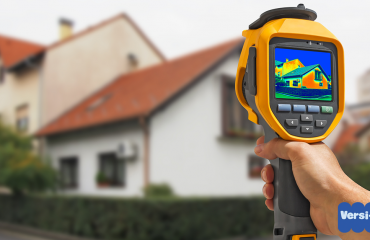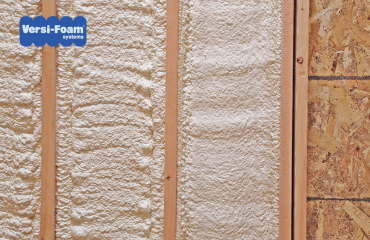Spray foam insulation is one of the most popular insulating materials available. Consequently, there has been a lot written about its pros and cons, including plenty of stories of spray foam insulation gone wrong. It’s important to remember that not everyone who chooses and uses spray foam insulation takes the time to learn how to use it properly, leading to mistakes and rework.
From lack of preparation to ignoring thickness limitations, we’ve seen it all. When used according to the manufacturer’s instructions, spray foam insulation can be installed without problems and without drama. Here is our quick-start guide to preventing common spray foam installation problems and what to do if something doesn’t go as planned.
First, pick the best insulation for your project. If you’re unsure which formula you need, read this blog post on the Differences Between Spray Foam Insulation Products. Next, read the rest of this article to learn what to keep top of mind as you complete your project.
Spray foam insulation mistakes generally fall into five categories.
- The work area wasn’t prepared properly before application.
- Foam was applied to a surface that wasn’t completely dry.
- The foam wasn’t applied at the required thickness.
- The foam containers weren’t brought to the proper temperature before spraying or the ambient temperature was too hot or cold.
- Container A and container B aren’t mixing properly as the foam is dispensed.
Let’s take a closer look at each of these.
Preparation
Management of overspray is an important part of pre-application preparation. Overspray happens when the product becomes airborne after the chemicals have been mixed. It lands on surfaces in the surrounding area, expands, and dries. It’s important to seal off the area with plastic sheeting and cover anything that can’t be moved. It’s also important to extinguish ignition sources in the area and make sure that people don’t smoke where the spray is being applied.
Surface Area
If you spray foam on a surface with a moisture level of more than 20%, the foam won’t stick. The surface has to be paintable for the foam to adhere. “When a surface is wet or damp, the moisture acts as a blowing agent that reacts with the “A” side of the SPF system, resulting in off-ratio foam with poor physical properties and poor adhesion.” (source) So make sure to test the moisture level before you spray.
Thickness
If the foam is sprayed thicker than recommended for its type, excessive heat can result causing odors, cracks, shrinkage, or charring. To prevent this, never spray more than a 2” thickness at a time. To spray more than 2”, apply in layers allowing the foam to cure for at least 15 minutes between layers.
Temperature
The ideal temperature for both the foam and the surface is between 65° F and 90° F. Surfaces that are colder will result in reduced yield because the cold surface extracts heat from the exothermic reaction resulting in a reduced rise. If the surface is 40° or colder, the exotherm may also cause condensation, which would be like spraying foam onto a wet surface (see above).
Surfaces that are too warm may result in the foam curing too fast. This would also result in a reduced yield because the foam would not have enough time to reach the full rise before a tack free state. In addition, extreme cases may result in loss of adhesion because the foam would cure so fast it could not develop a bond to the surface before it hardened. If you’re unsure if the temperature is right, do a test patch first.
Mixing
Good quality foam is dependent on one-to-one ratio dispensing. Incorrectly mixed chemicals result in foam pulling away from the surface and lingering odors. The easiest way to determine that you have a good ratio is to observe the stream of chemicals coming out of the gun before they pass through the mixing nozzle. If the two chemical streams aren’t flowing at equal velocity, check the dispensing gun for proper function and the temperature strips to make sure the chemicals are in the mid-green section.
Sometimes you’ll know immediately if something has gone wrong. But other times mistakes in application may not show up for a while. If you see any of the following signs, it means you need to take a closer look at your insulation.
- Moisture in the attic
- HVAC working overtime
- Ice dams on the gutters
- Rooms inconsistently heated or cooled
- A pest infestation
- The spray foam contracts and pulls away from framing.
If you want to know more about preparing for and executing a successful spray foam installation, check out our FAQ page check or our Video Library. Or give us a call and we’ll be happy to discuss the details of your project with you. 1.800.657.0702




